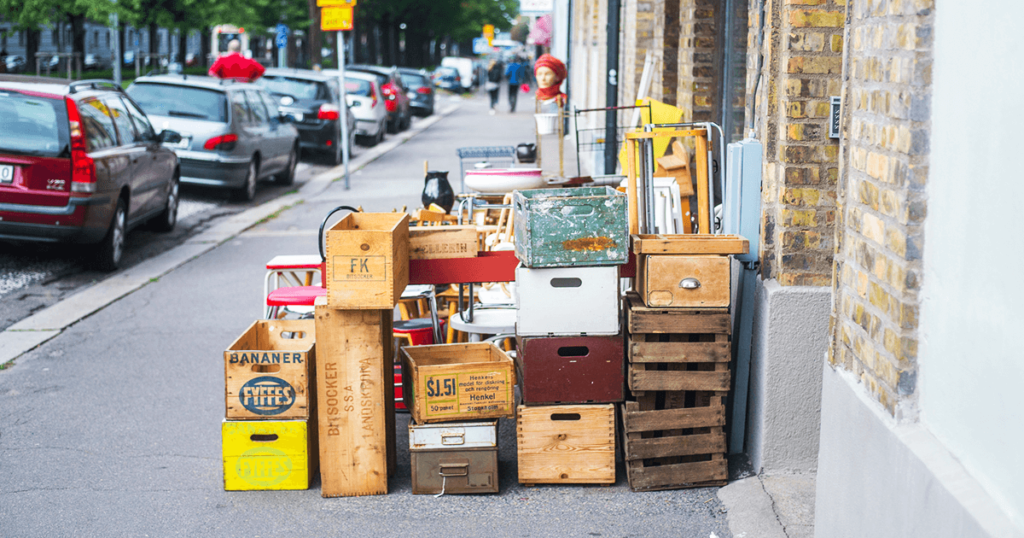
It’s unclear to me if all the stuff I collect should be placed tastefully about my house on shelves where it will only collect dust or instead be put away safely in boxes. When lolling on the sofa, trying to imagine the best course of action, I picture climbing the attic stairs to deposit the boxes in the farther reaches of a large, warm, empty area just under the roof, such as my mother had in her big brick house in Cape Girardeau, Missouri. It was a place where you went to fix leaks, stack boxes, or access some old wires that really someone should do something about: a tremendous space. My dad and stepmother have a crawlspace instead of an attic, and nothing’s stored in that cramped space. My grandmother had an attic of sorts in her one-story house, and access to it was in her hallway, where you pulled on a dangling cord and down folded a section of the ceiling with a wobbly set of stairs attached.
But it’s not like that in Spain, where an atico is a small apartment under the eaves, cheap without a view or wildly expensive with one. Instead, here where most people live in apartments, you have a trastero, a room for junk, and to fill it, trastos, all those leftover, seemingly useless but surely not completely worthless things we hang on to.
I do live in a house and so I have something of an attic, a would-be attic, difficult of access, closed on three sides but open on the fourth, a sort of loft really, with a bare, dangling bulb and low ceiling obliging you to maneuver in a crouch. It’s full of furniture my kids might want someday. It’s not the spot for my collectibles.
These collectibles are not thrift-store treasures or estate-sale booty but things I’ve literally picked up along the way. This is where most such goodies come from in a country without thrift stores and garage sales. Curious things often, fun to wonder about. A worn and rusted wrench, a bolt of enormous size, a wooden screwdriver with a hollow handle to store screws, a black glass jar with cap and a matching jar without—things found on the street, as eye-catching as gleaming coins, and much more common. I have 11 wooden blocks I found beside a trash bin in Madrid 30 years ago, took home, painted glistening white, black, and yellow, and have ever since carried with me from house to house, wondering what to do with them.
Of anything I find when out on a walk through a park, on a run, or on a stroll along city streets, I typically wonder what good it is, though its claims to worthiness seem as strong as any other object’s. A use is what it wants and I want for it, and all that’s occurred to me is to glue the things together, run a wire through the heap, attach a plug at one end and a light bulb at the other, and bingo! A lamp!
With the blocks, I have set out to do just that. But I get held up in the configuration. Exactly how should I place them, and what effect—haphazard, orderly—am I after? I try to remember what I was thinking 30 years ago, when I picked them up and carried them back to my apartment. Once the epoxy is applied, the myriad of possibilities will drop off like petals on a flower, and though I’ll have a working lamp, I might not have the loveliest one. I’ve fiddled with placement but again and again put off permatizing.
Permatizing?
It just appeared to me, that word, picked up on one of the byways of my mind. Could it be from permanent and weatherize, perhaps? To others it may look broken, chipped, ugly, useless, not even a word but a brittle melted-goop fusion of two. Nevertheless, I’ve just found a place for it. But does it illuminate anything? I don’t know, but sometimes a place is a use.

